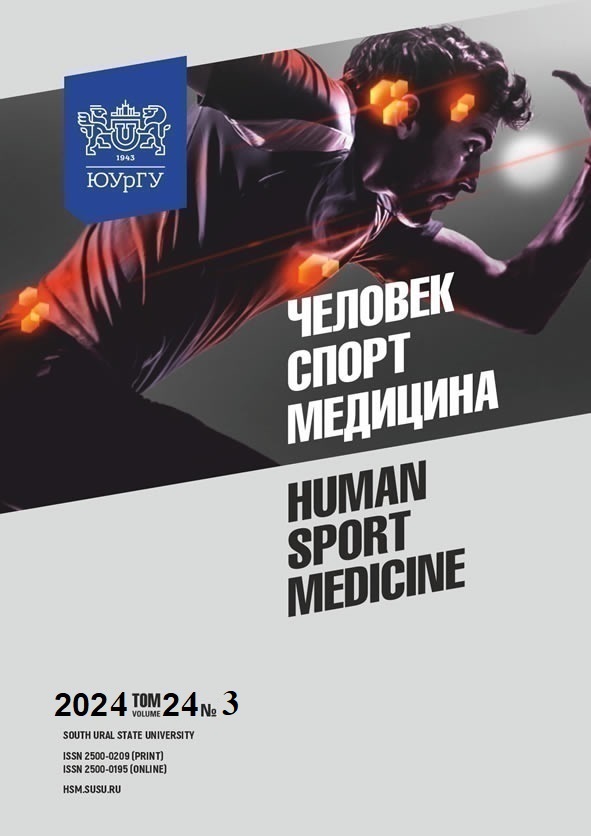AGE DYNAMICS OF STABILOMETRIC INDICES IN FEMALE RHYTHMIC GYMNASTS
Abstract
Aim. This study aims to evaluate the age dynamics of force platform measurements in female rhythmic gymnasts. Materials and methods. The study involved 157 rhythmic gymnasts, ranging from the third junior category to the Honoured Masters of Sport. All athletes were assigned age groups from 3 to 20 years. Utilizing the STPL (MEPA) force platform, the statokinetic function analysis was conducted through the performance of the Romberg test and a combined test. The parameters under study included the ellipse area (mm2), the average center of pressure (CoP) velocity (mm/s), and the statokinesiogram power (mW). Results. The results obtained indicated that the younger age groups (≤ 8 years) exhibited significantly higher statokinesiogram area indices (p ≤ 0.04, 358 [218; 545] mm2) compared to those of older athletes (169 [103; 307] mm2). A statistical disparity was observed in the average CoP velocity between gymnasts aged below 10 years (13 [11; 15] mm/s) and those above (9 [7; 9] mm/s) (p ≤ 0.02). Analysis of the ellipse area during the static part of the combined test revealed differences between gymnasts aged below 8 years (251 [163; 412] mm2) and those above (102 [80; 116] mm2) (p ≤ 0.04), whereas the dynamic part of the combined test showed differences between gymnasts aged below 10 years (315 [189; 435] mm2) and those above (149 [72; 236] mm2) (p ≤ 0.04). Conclusion. In conclusion, the stabilometric assessments underscored the superior postural control system, along with enhanced sensory and proprioceptive regulation, in older athletes relative to their younger counterparts.
References
References on translit
Copyright (c) 2024 Human. Sport. Medicine

This work is licensed under a Creative Commons Attribution-NonCommercial-NoDerivatives 4.0 International License.















